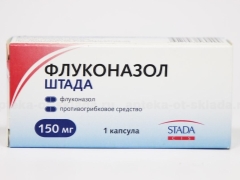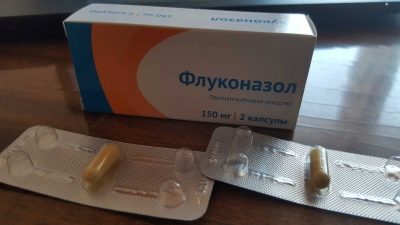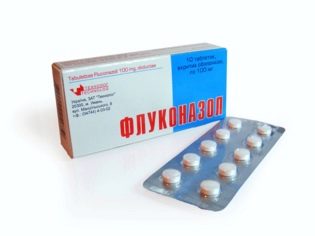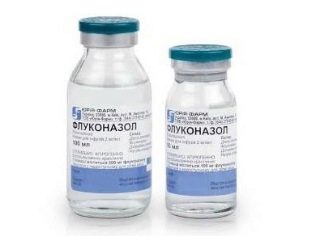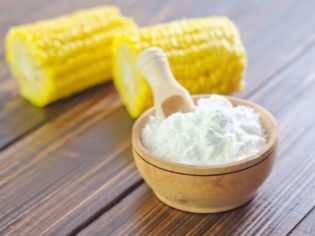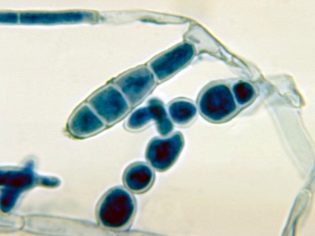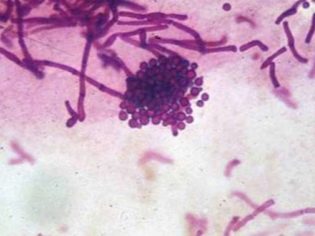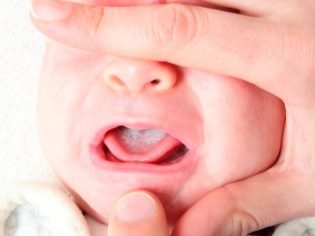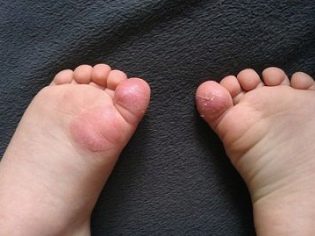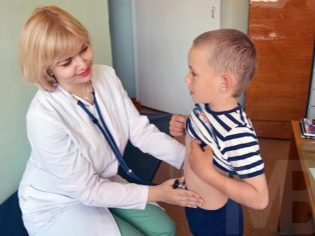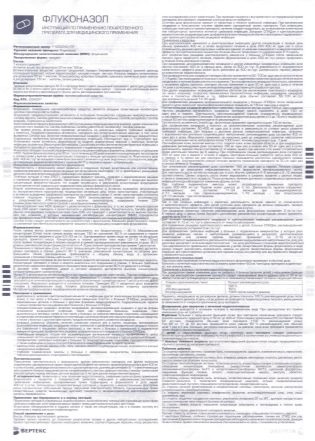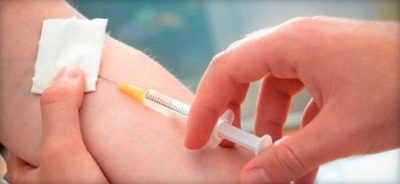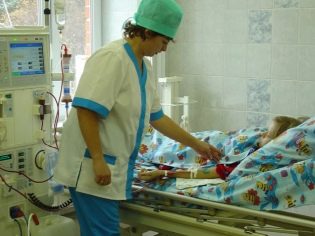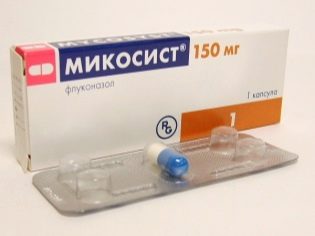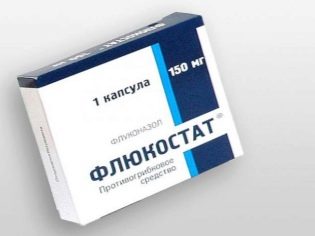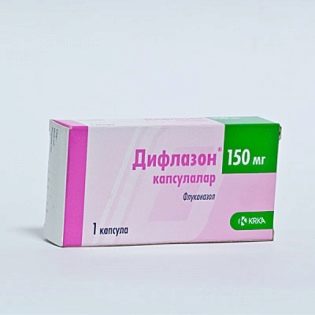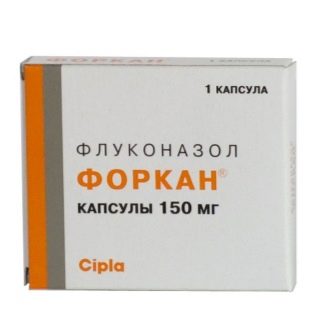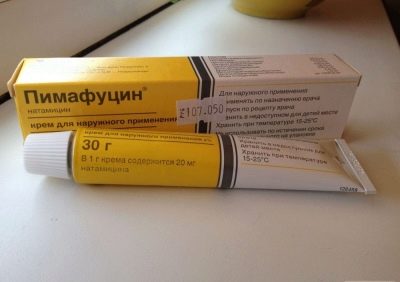Fluconazole for children: instructions for use
When a child is diagnosed with a disease that is caused by pathogenic fungi, drugs are used that can act on such pathogens. One of the most popular among them is Fluconazole. He is well established in the fight against Candida and other fungi, distributed in pharmacies and receives mostly good reviews from doctors and patients.
Release form
Fluconazole is manufactured by many Russian and foreign pharmaceutical companies. and presented in pharmacies in several dosage forms:
- Capsules They are yellow, white-green, blue, white-blue, dark green, white or white-yellow. Inside the dense gelatin shell is a white powder. Packages containing one, seven, or ten capsules are most common, but some manufacturers offer a different amount. The drug is sold in blisters or in jars.
- Pills. Usually they have a round shape and a white shell. Depending on the dosage, one package of such "Fluconazole" includes 1, 2 or 10 tablets.
- Solution for pricks. It is available in 50 or 100 ml polyethylene or glass vials and is a colorless (sometimes yellowish) clear liquid. Depending on the doctor's prescription, you can separately purchase one bottle or buy a package containing 5, 10 or more bottles.
Sometimes the drug name includes a second word or prefix indicating the manufacturer, for example, Fluconazole Sandoz is made in Slovenia by Sandoz, Fluconazole-Teva is a product of the well-known Israeli company Teva, and Fluconazole Stada is produced in Russia Nizhpharm company. However, the effect of such drugs is the same, since they are all antifungal agents based on the same substance.
Composition
The main component of the drug has the same name - fluconazole. In solid form (both in capsules and tablets), it is presented in dosages of 50, 100 or 150 mg. One milliliter of solution for injection contains this ingredient in the amount of 2 mg. Additionally, in capsules, depending on the manufacturer, there is corn starch, MCC, milk sugar, aerosil, calcium stearate and other substances.
Auxiliary components of the injection form are sterile water and sodium chloride, and some manufacturers add to the solution hydrochloric acid or sodium hydroxide (this is necessary for a suitable pH).
Operating principle
Fluconazole has a specific effect on pathogenic fungi. In particular, such a substance inhibits the activity of the enzyme, which is called "cytochrome P450". This affects the metabolic processes in the cells of fungi and increases the permeability of their membranes. The drugs have a high activity in relation to candid. Fluconazole also affects other pathogens of mycoses, including cryptococcus, coccidioids, trichophytons and ringworm pathogens.
Indications
Fluconazole capsules and tablets are discharged if Candida is damaged by the mucous membranes of the mouth, lungs, skin, genital organs (for thrush), the heart, and other organs.The drug is also used for mycoses of different localization (trunk, feet, nails), with histoplasmosis, cryptococcosis and coccidioidomycosis. . Capsules are also prescribed to prevent fungal damage after a course of radiotherapy, chemotherapy, HIV, malignant tumors, after transplantation, and in other cases when immunity is affected.
Treatment with Fluconazole in the form of injections is resorted to with generalized forms of candidiasis, endemic mycoses and cryptococcosis. The drug is also in demand as a prophylactic agent with a reduced immune response, for example, if the patient receives immunosuppressive drugs or has undergone an organ transplant.
From what age is prescribed?
The use of "Fluconazole" in children is possible from birth, but solid forms are not used until the age of 3-4, because young children are quite difficult to swallow them. Since the removal of fluconazole in newborns is slower, babies in the first two weeks of life are given injections not every day, but with an interval of 72 hours.
For children of the third and fourth weeks of life, the medicine is injected at intervals of 48 hours.
Contraindications
Fluconazole should not be used in children with hypersensitivity to any of the ingredients of the medication. In the presence of milk sugar in capsules, this medicine is not prescribed to patients with its intolerance or lactase deficiency. The control of a physician in the treatment of such antifungal agent is required for children with liver failure, heart disease, kidney pathologies and other serious diseases.
Side effects
Due to the use of fluconazole, various negative reactions can occur eg:
- skin rash;
- reduced appetite;
- headache;
- nausea;
- loose stools;
- taste changes;
- itchy skin;
- flatulence.
If you experience these or other symptoms, it is recommended to consult a doctor to select another drug.
Instructions for use
Capsules or tablets
The drug in this form must be swallowed and washed down with water. It is not recommended to chew, chew or open it in other ways. Such "Fluconazole" is given to the child once a day in a daily dose, which is calculated by weight and taking into account the diagnosis. For example, with candidal stomatitis, the drug is prescribed at 3 mg / kg per day.
On the first day, sometimes the doctor recommends taking the capsules in double dosage (6 mg / kg). The same dose is used prophylactically, but may increase to 12 mg / kg. With more serious forms of candidiasis, the dosage also increases to 6-12 mg / kg.
In children, do not exceed the permissible daily dose, which is considered 12 mg / kg. For example, the medication was prescribed to a patient of 7 years old weighing 25 kg. Such a child should not be given more than 300 mg of fluconazole per day, which corresponds to six capsules of 50 mg each, three capsules of 100 mg each or two capsules of 150 mg each.
Injections
The drug is administered intravenously once a day and can be diluted with saline, dextrose solution and other solutions used for drip infusions before use. Introduction should be slow.
The dosage is determined individually, because it affects the nature of the disease, and the weight of a small patient. For example, if generalized candidiasis or cryptococcal meningitis is found in a child, then from 6 to 12 mg of fluconazole is required for 1 kg of his body weight. The duration of this treatment is up to 12 weeks.
If a small patient has a lesion with candida mucous membranes, then the daily dosage of the drug will be 3 mg / kg. Many regimens include applying a loading dose on the first day (6 mg / kg) so that the concentration of fluconazole will quickly reach effective values. The duration of treatment is at least 2-3 weeks.
In order to reduce the risk of a fungal infection in a child, if his immunity is reduced (for example, after radiation therapy), from 3 to 12 mg of fluconazole per 1 kg of patient weight is administered intravenously.How long do such injections, determined by the blood test.
Overdose
Accidental overdose of fluconazole injections or in solid form can cause behavioral changes and hallucinations. To eliminate the signs of overdose use forced diuresis and symptomatic treatment. If the condition of the child is severe, resort to hemodialysis.
Interaction with other drugs
Fluconazole cannot be combined with drugs of terfenadine, rifabutin, warfarin, astemizole, phenytoin, acetylsalicylic acid, and many others.
If the child is already receiving any treatment, the question of the admissibility of the use of Fluconazole should be decided by a doctor.
Terms of sale
Solid forms of the drug are classified as over-the-counter drugs, and vials of Fluconazole for intravenous injections are sold only by prescription. The price of the drug is influenced both by the manufacturer, the dosage of the medicine, and the number of capsules / tablets / vials in one box. For example, 7 capsules of Fluconazole-Teva 50 mg each cost about 260 rubles, and the same package of medicine from a Russian manufacturer can be purchased for 20-60 rubles.
Storage conditions
Store packaging with capsules should be at a temperature of up to +25 degrees. To keep such "Fluconazole" at home is important in a place where a small child will not find it. The shelf life of the encapsulated medication is usually 2 or 3 years.
Reviews
In most cases, the use of Fluconazole is positive. According to parents, this is an effective and affordable drug that quickly helps eliminate the manifestations of candidiasis. However, in some patients he provoked adverse reactions. There are also cases when the effect of the drug was insufficient, which is why Fluconazole had to be replaced with other medicines.
Analogs
If you use "Fluconazole" does not work, primarily interested in drugs that have the same active substance. These include:
- "Diflazon";
- Forkan;
- Flucorus;
- “Flucor”;
- Fangiflu and other medicines.
All of them are available in capsules and tablets, as well as in injectable form. Only "Diflucan"Is additionally represented by powder in plastic bottles, from which an orange suspension is prepared. Such a sweet syrup can be administered to children of any age, therefore, it is highly in demand for candidiasis in infants and preschoolers.
Fluconazole can also be replaced by drugs that contain clotrimazole. One of the most popular among them is “Candide". Most often, 1% solution or 1% cream is prescribed to children. With such forms, Candida performs local treatment of the areas affected by fungi. They are allowed for use at any age, even in infants. Analogs of "Candida" are the drugs "Candibene", "Clotrimazole"," Candizol "," Amiklon "and others.
For candidiasis, other drugs with antifungal activity can also be used, for example, "Pimafucin», «Nystatin, Hexoral, Oralcept or Itrazol.
However, it is up to the physician to prescribe any of these drugs as a replacement for Fluconazole, because they differ in both the mechanism of action, age limits, and forms of release, and dosages acceptable for children.
About the drug "Fluconazole", see the following video.
